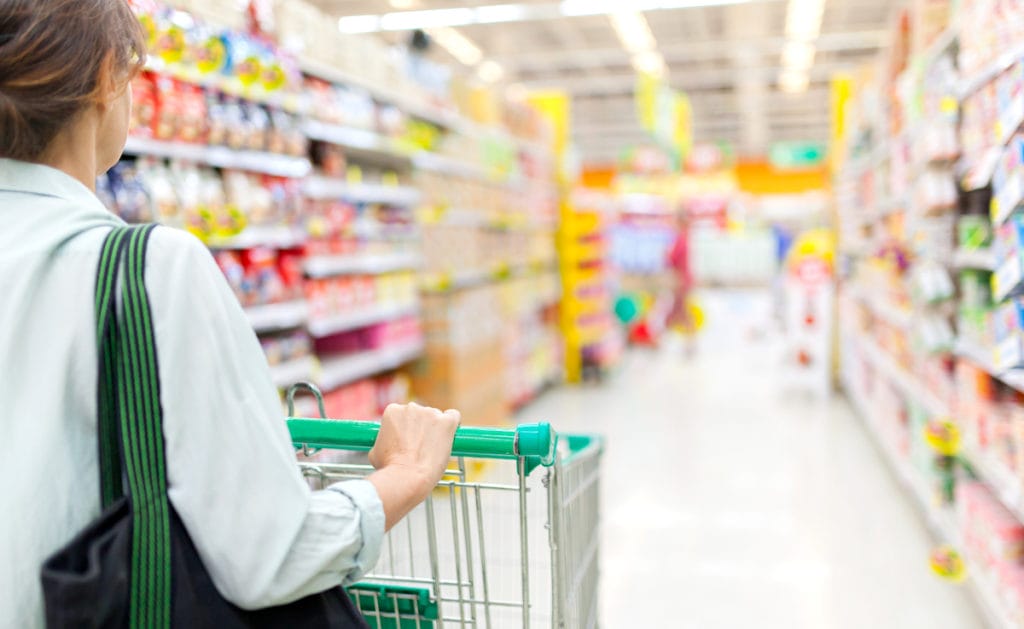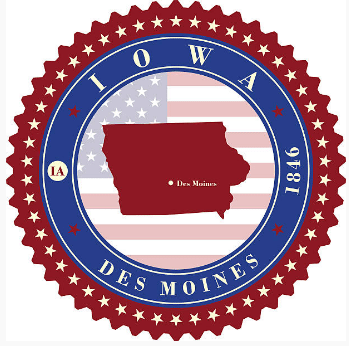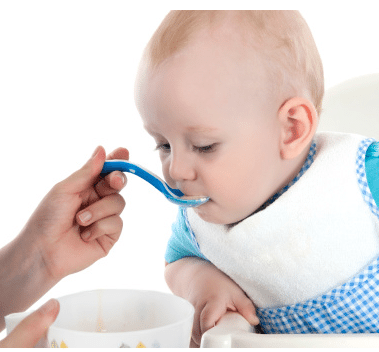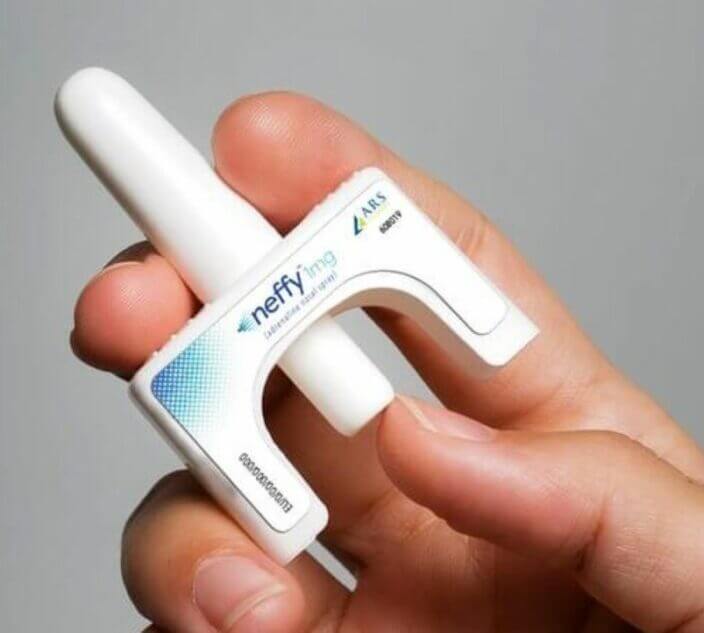
The nonprofit Food Allergy Research and Education (FARE) recently published a three-part research report that looks closely at the food allergy consumer. It examines everything from shopping habits and allergen label reading to the market potential of 32 million Americans with food allergies and their families.
With this research as a basis, FARE is in discussions with major food manufacturers and the Food and Drug Administration about developing a new universal precautionary allergen label. In the food allergy community, such labels are commonly referred to as “may contains”.
Under the U.S. law known as FALCPA, food makers must explicitly list any Top 8 allergens on the ingredients labels of packaged foods. In contrast, precautionary allergen labels, or PAL, are meant to indicate possible allergen cross-contact in manufacturing. But there has been no consistency in their wording.
A PAL warning might say “may contain [egg],” or “made in a facility that also produces [peanut],” or “manufactured on equipment that processes [milk],” or many other variations. These are voluntary labels, which not all manufacturers currently use. Plus, neither the industry nor the FDA has defined what’s meant by the terms when they are used.
“There is no standardization around PAL in terms of wording and appearance. This is confusing for consumers, so they spend extra, valuable time reading labels or avoid entire food categories. This can make grocery shopping a stressful experience,” concludes the FARE report, called “The Food Allergy Consumer Journey”.
Highlights of the FARE Report:
- 71% of food allergy consumers check food labels every time they shop.
- 55% of these consumers spend 3 to 5 minutes reading each product’s label to see if it is safe for allergies.
- 64% of allergy shoppers repurchase the same packaged foods, and “care deeply about trust” in a brand.
- 68% trust smaller allergy-friendly brands, compared to 45% who trust large brands.
- $19 billion is the report’s tally of the market opportunity based on: an estimated $10 billion foregone when allergy consumers avoid large brands’ foods, plus $9 billion currently spent on free-from product alternatives.
- The allergy market is large, growing and presents a significant opportunity for big manufacturers.
Q&A with FARE on Universal Precautionary Allergen Label
Allergic Living editor Gwen Smith interviewed FARE’s CEO Lisa Gable and Anita Roach, FARE’s vice president of education and voice of the patient, about the report and the nonprofit’s push for a standardized voluntary PAL system. Roach worked closely with Dr. Ruchi Gupta of Northwestern University’s Feinberg School of Medicine on her study for the report on consumer PAL preferences.
FARE’s report, which involves three studies, says a lot about what food allergy consumers do and don’t trust when shopping. What stands out about that?

Lisa Gable: The research shows there is so much confusion. And secondarily, there is a greater lack of trust for large companies versus small companies. In the food allergy world, because small companies have been started by people who either have the disease themselves or have someone in their family who has the disease, there is an element of faith that the smaller company is more cognizant of the family’s concerns.
Anita Roach: People are drawn to companies that have great communication, great transparency and are open. With some of the allergy-friendly brands, you get that human connection and communication, whether it’s through social media or a 1-800 number. It just shows that communication is key in building trust.
Can you describe the problems that consumers encounter with the current precautionary labels?

AR: Food-allergic consumers are tasked with trying to understand up to 40 different precautionary guidance labels. We’ve seen in our research that this leads to stress and confusion, especially for those living with life-threatening food allergies. So if we’re able to come to consensus around one label, we could really reduce the amount of time people are spending reading labels.
We know that some families are spending upwards of five minutes on each product, each time they’re shopping. This is reading a label, trying to understand the precautionary allergen label. So having consensus around what a label means and what it doesn’t is so important – because there are so many labels, and so many definitions. We know that none of them are consistent as there’s no consensus on the meaning.
What is FARE wanting to see in the proposed universal PAL label?
LG: Very specifically, we want to select a label that we all agree to, with consistent language and nomenclature that is the same across all forms of communication – on the package, online, on QR codes, etc. [The idea is to] develop that level of consistency in any communication that the consumer packaged goods makers have with the consumer.
We’re making the request to the industry that they support a market education campaign to go out to all consumers. They have the mechanisms to do the standardization, we just have to work with them to make sure it happens.
AR: I’d stress the importance of having this information readily available, not only on the package, but also having information digital, whether it’s an app, a website, a QR code that families can scan. That way families can quickly understand what the label means. With the ‘may contain’ label, they can find out more about the manufacturing process.
It’s so important to have that digital piece because we know families are spending a lot of time in the stores reading labels. They’re going to multiple stores in order find foods to keep their families safe and well-fed. And during COVID-19, families are shopping for foods in different ways, including at-home through websites and apps. So having that consistent label available digitally is a next step to all of this.
Down the line, we would love to see icons or images of the Top 9 allergens [Roach includes sesame as the ninth] be established. That would help families to understand quickly what is in a product and whether the allergen they’re allergic to is in the product.
LG: On icons, we’d like to be able to see this on packaged foods, but also at food service and point of sale. We’ve talked to people across the entire food industry about this. [The idea is] no matter how you purchase or consume your foods, that you always have a consistent visual image that tells you there is an allergen in that food.
Would the packaged goods industry handle this, or would FARE get involved with a database?
LG: The packaged goods companies have a system. The best way to get this to market quickly is to utilize their existing systems. They have to own the problem and they have to have the burden of solving the problem, with FARE advising them, along with getting the FDA to endorse the solution. And also to have the FDA be part of the communication of that solution.
In the report, you refer to this universal PAL label concept as a new “standardized voluntary precautionary labeling system.” A lot of allergy families would like to see a mandatory system. What do you say to those who ask, “Can a new PAL system be mandatory?”
LG: We want to solve this problem as quickly as possible …. The type of system and conversation we are having is at a very high, universal level. That has never happened within the food allergy community before. So we are tapping into a self-regulatory process the industry has with the FDA that has been highly successful and has certain parameters to it.
The industry and the FDA, as well as the industry and FTC [Federal Trade Commission], have certain agreed-upon regulatory processes that require the two to work closely together in communication to the consumer as to the standards that are being met by processes being put into place.
We saw that with ‘Facts Up Front,’ that’s an easy one for your readers to understand. They look at a bag of Lay’s potato chips – on the front of it is a logo, which is also on many other products. It’s a logo that tells you how much sugar or fat or salt is in that product. That is a self-regulatory initiative that was negotiated between industry and government on an issue that government wanted to see solved.
You mention speed of process with a voluntary system. If this was to be a mandatory process, what would that entail?
LG: At that point, you’d be working with Congressional hoops, you’d be working with people lobbying and expressing their special interests, and you would be talking about a lengthy process, as we are seeing with sesame. If you look at sesame as an example, it’s taking a lot longer than it should to have that added [as the ninth top U.S. allergen]. If you take that same long process, it is more difficult to solve the problem in a nearer-term time that benefits the consumer.
It is the advantage of the new way that the FDA and the industry have been working together based on product communications related to health issues. It’s a process that was highly developed during the Obama administration, and has been very effective versus the long march that you get to when it becomes politicized and states weighing representing a wide variety of players. It’s easier to get a commitment of the big players, which forces everyone into a lockstep agreement. We have been working toward getting everyone to that point over the last two years.
The report find 64% of food allergy consumers buy the same foods every time they shop and 68% trust allergy-friendly brands. FARE calls its report “The Food Allergy Consumer Journey.” What do these facts say about that journey?
AR: People want to use the products of brands that get where they’re coming from, and understand the situation and that safety is key for them, along with taste and convenience. Certain brands are able to communicate that, and the food-allergic consumer is really drawn to that. There’s an opportunity for large brands to do the same. We know they have the cleaning protocols in place to keep families safe. There’s just a gap sometimes in communication about what those practices are. You see that in the data, the preference for the all-friendly brands, because they are able to communicate to the families that safety is key.
This is a growing consumer group – growing at a rate of 4 percent a year. I think the research we’ve conducted shows their loyalty, and it’s a growing base. That should be attractive for a large brand to consider when thinking about new products.
Anything else to mention on the report?
LG: I’d like to give a callout to [Dr.] Ruchi Gupta, who is the person who did the original research. Her research is not as fully represented in this report, because she will be publishing it. Ruchi was funded for this project through funding given to FARE by the National Confectioners Association. We greatly appreciate Dr. Gupta as someone who has been an adviser at all the steps of the way.
Related Reading:
FARE’s Food Allergy Consumer Journey Study
‘May Contain’ Warnings on Labels: What You Need to Know
Free COVID-19 & Allergies e-Magazine





